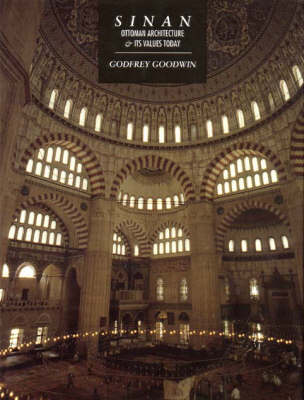This illustratd study focuses on the work of one of the greatest 16th-century Ottoman architects, Sinan Abdulmennan, showing how he revolutionized inherited Ottoman building methods - a tradition based on structure - by an awareness of the psychology of space. Until Sinan, Ottoman architecture had been a reading of parts. He broke down the distinct forms that had created a certain rigidity, thus freeing interior space and interior form simultaneously. Underlying his architectural concepts are the mathematical theories and practices of classical Greece. He shared these ideals of proportion and balance with builders in the West - indeed, the author argues that the work of Sinan and that of Bramante and Palladio must be seen as part of the same intellectual revolution. Although not designed as a life of Sinan, this work nevertheless shows the importance of the architect's long years in the army and his experience of bridges, siege-works, fortifications and the behaviour of stone and masonry before he was appointed Royal Architect in 1538.
Goodwin bases his analysis on a comparative study of certain of Sinan's buildings, the supreme example being the imaginative leap represented by the mosque of Selim II at Edirne, second capital of the Ottoman empire. Included are chapters on light and space, the dome, minaret and the apsidal form, and decoration and tiles.
- ISBN10 0863561721
- ISBN13 9780863561726
- Publish Date 14 February 2001
- Publish Status Active
- Publish Country GB
- Imprint Saqi Books
- Format Hardcover
- Pages 135
- Language English
